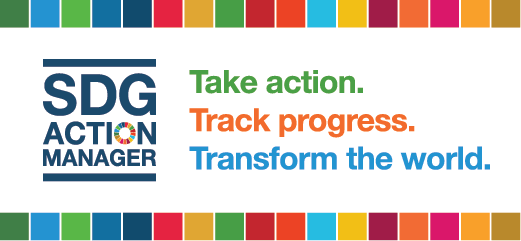How Can We Measure—and Convey—What Matters Most?
Why Organizations Should Align Their Work with the UN Sustainable Development Goals

It seems like common sense. Donors want to know how their donations have helped an organization attain the social change that is important to them. Each organization has its own way of moving the dial on the big picture, whether it be to end poverty, reach gender equality, or stop climate change — these important goals are the reason not-for-profits exist.
So why is it so hard for organizations to show how their individual work affects the underlying issues that are the source of so much social disparity?
One reason might be that we can get lost in the day-to-day mission and focus on internal targets that resonate well with staff and volunteers but don’t provide the context that a wider audience seeks when choosing to allocate their donations. Donors need to feel that they are making a difference and see their impact on the wider issue they believe in.
Having a broad mission also can make it difficult for some organizations to show they are successful in tackling big-picture issues. This can sometimes be the consequence of organizations keeping as many funding options opened to them as possible or following an outdated strategic plan.

Stories, Stats, and a Universal Filter
It is essential to show that an organization is going beyond just treating the symptoms of a social problem. By illustrating how you are working toward eliminating the root causes that create an unsustainable situation, you build lasting engagement with your stakeholders.
Using classic methods of storytelling and sharing big data based on national statistics are useful ways to tie your organization’s work with the bigger picture. Since January 1, 2016, a new tool has been available to organizations, businesses, and countries that will make our planet a more sustainable place for all: The U.N. Sustainable Development Goals (SDGs) can unite the work of the nonprofit sector on a global scale.
The SDGs are the blueprint to achieve a better and more sustainable future because they address global challenges, including those related to poverty, inequality, climate change, environmental degradation, peace and justice. By using the SDGs as a way to set micro-level goals for your organization, you can effectively measure what matters because you are moving as part of a wave toward a more sustainable world. While micro-level goals can be simple and clear, they can contribute to success on a grander scale.
Canada has already reported on how, as a country, we are fairing in achieving the 17 goals agreed upon by 193 nations around the world. This data is helpful for organizations to use as a clear benchmark that can be communicated with stakeholders because it is a way to showcase your contribution in moving the dial on a national level. It is data that demonstrates to donors how their donation is hard at work at the underlying issue that matters the most to them. And that is the crucial part in framing who your organization is to them.

Working Within a Broader Framework
Many not-for-profits are making the conscious choice to use the SDGs as a universal filter for their work and for their organization. Recently, Geordie Theatre, a Montreal-based group that delivers performances to children and their families with the goal of ensuring that theatre is accessible to all, has embarked on the process.
Staff participated in a workshop organized by Certified B Corporation Phil that walked them through the process of identifying how their organization’s work fit into the broader framework of the SDGs. Over a few hours, they identified a clear framework to orient their work in a common direction. From the choice of playwrights to hiring practices, they are using a new set of questions based on the clear and simple goals they set that are grounded in the SDGs.
The next time your major donor asks for a report to show how you are working toward eliminating the root causes that are creating so much social disparity in our world, consider how much clearer you could present the important work you are doing through the lens of the world’s to-do list. It is worth the effort as an organization to embrace the SDGs as a united way to work together as a sector to achieve the goals set out by 2030. You don’t have to start the process of reframing success alone, we are here to help.
Take a look at how Phil has chosen to work on the SDGs for a little inspiration.
A version of this article was published by Phil. B the Change gathers and shares the voices from within the movement of people using business as a force for good and the community of Certified B Corporations. The opinions expressed do not necessarily reflect those of the nonprofit B Lab.

How Can We Measure-and Convey-What Matters Most? was originally published in B The Change on Medium, where people are continuing the conversation by highlighting and responding to this story.